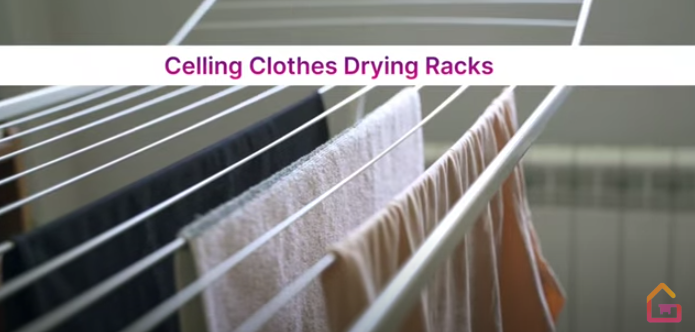As the winter chill sets in, drying clothes outdoors becomes a daunting task, leaving many of us relying on indoor drying methods. This necessity is particularly acute for those without tumble dryers or with limited outdoor space.
Understanding the best practices for indoor drying is crucial not only for maintaining the quality of your clothes but also for ensuring healthy indoor air. Halton Stairlifts, building expert – George Firad gives a comprehensive guide to help you with the challenges of drying clothes indoors during the colder months.
Understanding the Basics
At the heart of drying clothes is the process of evaporation. Indoor air during winter often has lower humidity, which can be an advantage for drying clothes. However, without proper ventilation, this can quickly turn into a moisture-laden environment, leading to potential issues like mildew.
Best Practices for Indoor Drying
Maximising Air Circulation
Air circulation is key to effective drying. Position your clothes in an area with good airflow, such as near a fan or an open window. Be mindful not to overcrowd the drying space, as this can significantly slow down the drying process.
Using the Right Equipment
Choosing the right drying rack can make a world of difference. Consider the layout of your space and the type of garments you’re drying. Additionally, in very damp or cold rooms, using a dehumidifier or heater can accelerate the drying process.
Effective Clothing Arrangement
How you hang your clothes can impact drying efficiency. Hang shirts on hangers and avoid folding heavy items over rack bars to ensure even air exposure.
What to Avoid
Avoiding Mould and Mildew
Poor ventilation during indoor drying can lead to mould and mildew growth. It’s vital to ensure good air quality in your drying area. Regularly airing out the space can prevent these issues.
Preventing Damage to Clothes
Avoid placing clothes too close to direct heat sources, like radiators, as this can damage the fabric. Be cautious of colour transfer and stretching from improper drying techniques.
Special Considerations
Dealing with Limited Space
In smaller apartments, creativity is key. Foldable drying racks or utilising bathroom steam during a shower can be effective space-saving strategies.
Energy Efficiency and Eco-Friendly Tips
Indoor drying in winter can be more energy-efficient compared to using a tumble dryer. However, when using heaters or dehumidifiers, it’s important to consider their energy consumption.
George Firad says:
Drying clothes indoors during winter doesn’t have to be a challenge. By following these tips, you can ensure your clothes dry efficiently and safely, without compromising the health of your indoor environment. Adopting these practices can contribute to a more eco-friendly and energy-efficient laundry routine
Help keep news FREE for our readers
Supporting your local community newspaper/online news outlet is crucial now more than ever. If you believe in independent journalism, then consider making a valuable contribution by making a one-time or monthly donation. We operate in rural areas where providing unbiased news can be challenging. Read More About Supporting The West Wales Chronicle























